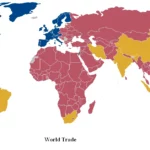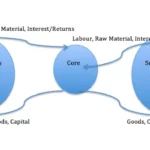The Fuel of Empires: Understanding Tithes
Tithes, often imagined as ancient offerings, were a cornerstone of power and societal structure throughout history. Imagine a system where a portion of your earnings, typically one-tenth, funded empires, fueled religious institutions, and even sparked rebellions. This, in essence, captures the essence of tithes and their profound impact on shaping our world. This article delves into the fascinating history of tithes, exploring their evolution, their role in different societies, and their lasting legacy.
Beyond the 10%: A Global Perspective on Tithes
While commonly simplified as a 10% tax, tithes were far more nuanced. They represented a complex web of obligations, shaping the lives of peasants, bolstering religious institutions, and influencing the dynamics of state power.
From the ancient empires of Greece and Rome, where tithes sustained temples and funded elaborate religious ceremonies, to the medieval period, where the Catholic Church relied heavily on tithes to finance its vast operations, this form of taxation played a pivotal role in shaping political, social, and economic landscapes.
To attain a deeper comprehension of the clergy’s role in medieval Europe, explore the wealth of information provided about the clergy in the 1200s-1450s.
However, the impact of tithes extended far beyond the realm of religion. Consider the Ottoman and Safavid empires, vast political entities that relied on sophisticated systems of tax collection, including tithes, to maintain their power and influence. These empires levied tithes on agricultural produce, livestock, and even trade goods, demonstrating the far-reaching economic implications of this practice.
Types of Tithes: Unpacking the Variations
As we’ve seen, tithes weren’t a one-size-fits-all system. They varied considerably depending on the time period, geographical location, and specific societal structures. Three primary types of tithes emerged throughout history:
Predial Tithes: These were levied on agricultural produce, encompassing everything from staple grains like wheat and barley to fruits, vegetables, and even timber. Essentially, if it came from the land, it was likely subject to a predial tithe.
Mixed Tithes: As the name suggests, mixed tithes encompassed a broader range of goods, typically focusing on livestock and their byproducts. Farmers and herders might pay tithes in the form of wool, milk, cheese, or even young animals.
Personal Tithes: This category differed from the previous two in that it targeted the profits of labor and skilled trades rather than raw agricultural output. For example, a blacksmith, carpenter, or merchant might be required to pay a personal tithe based on their earnings. However, it’s worth noting that personal tithes became less common after 1549.
Challenges and Changes: The Evolving Landscape of Tithes
The history of tithes is not without its share of turmoil. As with any system that creates economic disparity, resistance was inevitable. Peasant uprisings, often fueled by resentment over excessive tithes and the perception of an exploitative ruling class, erupted throughout history.
In some cases, corruption within the system itself exacerbated the burden on common people. Inefficient collection practices and corrupt officials could undermine the intended purpose of tithes, further fueling discontent.
Moreover, as economic systems evolved, the dominance of tithe-based economies gradually waned. The rise of mercantilism and early capitalism, with their emphasis on trade, commerce, and wage labor, challenged the traditional structures upon which tithes relied.
Tithes in Modern Context: A Lasting Legacy
While the widespread practice of mandatory tithes has largely faded, their legacy continues to resonate. The concept of tithing, in a voluntary form, remains prevalent in some religious communities, prompting ongoing discussions about financial ethics, social responsibility, and the role of religious institutions in the modern world.
Furthermore, the historical influence of tithes can be seen in the development of modern tax systems. While key differences exist, such as the secularization of taxation and the concept of progressive taxation (where those with higher incomes pay a larger percentage), the underlying principle of citizens contributing a portion of their earnings to support societal functions remains.
Unlocking “Tithes” for AP World History: Key Points to Remember
To excel in your AP World History studies, here are some key takeaways about tithes:
- Tithes as a Foundational Concept: Understand that tithes were a fundamental aspect of many pre-modern societies, influencing state-building, cultural development, and economic systems.
- Land-Based Empires and Tithes: Analyze how empires like the Ottomans and Safavids utilized tithes to finance their expansion, administration, and military campaigns.
- Challenges and Changes: Recognize that tithing systems faced resistance, corruption, and eventually, challenges from evolving economic models.
- Tithes in Modern Context: Consider the lasting legacy of tithes in shaping modern tax systems and influencing contemporary discussions about religious giving.
By grasping the multifaceted nature of tithes and their impact on various civilizations, you’ll be well-equipped to analyze historical events, compare different societies, and demonstrate a nuanced understanding of global history.
- Crypto Quotes’ Red Flags: Avoid Costly Mistakes - June 30, 2025
- Unlock Inspirational Crypto Quotes: Future Predictions - June 30, 2025
- Famous Bitcoin Quotes: A Deep Dive into Crypto’s History - June 30, 2025
















